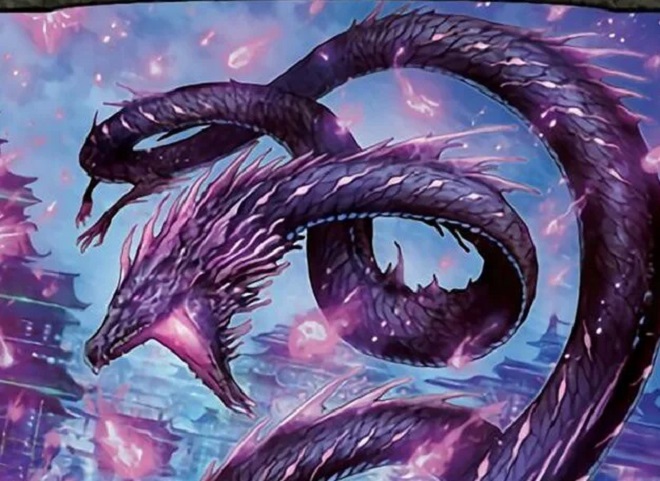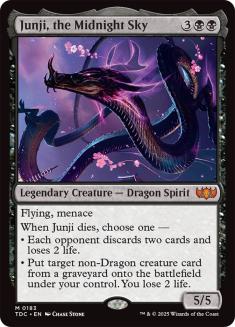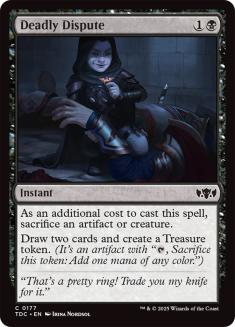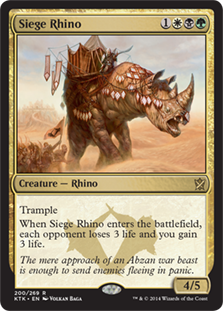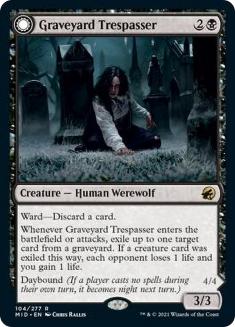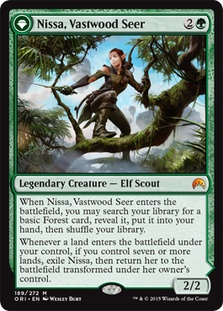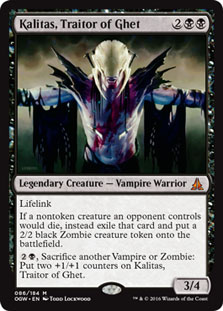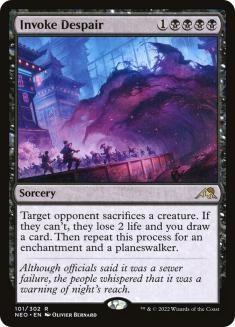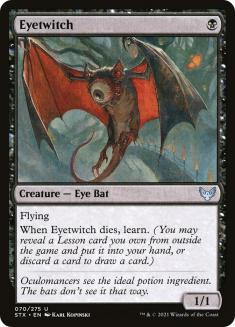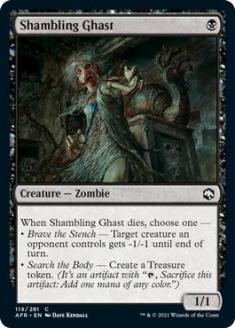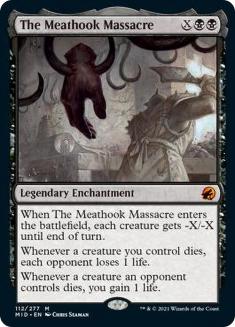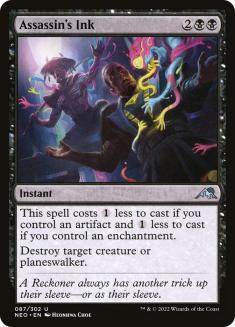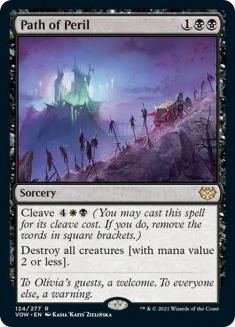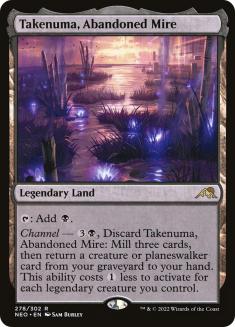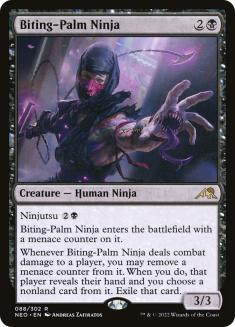The full release of Kamigawa: Neon Dynasty is just around the corner. So far, we’ve seen a lot of razzle-dazzle, but what cards are actually going to make an impact? The Invoke cycle, featuring Invoke Calamity, has caused a deep yearning inside for some monochrome action. I’m really digging some of the mythic rares, but I’m getting ahead of myself.
The original Kamigawa block is one I hold dear. It was around the time I was seriously getting into competitive Magic, and I have fond memories of traveling around the southeast United States looking for tournaments to battle in. I am no stranger to Kokusho, the Evening Star, a card many of you might not recognize because it was banned in Commander for years and hasn’t seen play in Constructed in a cat’s lifetime.
Back in the day, Kokusho was the pinnacle of end-game creatures. It was rare to get a rare creature, let alone a cycle, that would have powerful abilities when they died. Killing them was often worse than letting them survive, and letting them survive meant you had to race a 5/5 Dragon. It wasn’t easy to race, as the second copy would come down at just the right moment, both of them would die, and a ten-point life drain would occur. Of course, the rules are a bit different now, but you can see why it was so terrifying to leave a Kokusho unchecked!
In a deck that got to play black sweeper effects, Kokusho was a perfect follow-up to whatever sweeper you wanted at the time. Even if your opponent was able to deal with it somehow, which was a tall order before removal and creatures got really juiced up, the five-point life buffer would often allow you to claw back into the game, even with your primary win condition hitting the graveyard.
In Standard, I got to play with Death Cloud in the same deck as Kokusho. That one-two punch could kill your opponent from very high life totals, while providing you the necessary life buffer once the dust settled. That attrition gameplay, where you need every land, every resource, to get the job done — that’s where Kokusho shone the brightest.
Suffice it to say that times have changed. I doubt Kokusho or any other legendary Dragon from that era would see play in Standard. The removal is significantly more versatile, cheaper, and broader-reaching. Hell, I remember when they printed Putrefy and it was one of the coolest cards ever made because it could deal with two different permanent types. At this stage, that’s the entry point. But I digress, as the times have changed and we must change along with them.
The new cycle of legendary Dragons hits hard, and comes in a full mana cheaper than their previous iteration. Junji, the Midnight Sky at five mana is outstanding. If your opponent goes to kill it, they won’t be losing some life points. That’s an old and outdated effect for an archetype that no longer exists. We’re playing the attrition game, and to kill this sucker, you’re gonna need to discard two cards along with it.
Like Kokusho before it, you’re likely best off dodging this one or ignoring it completely. If you try to kill it, the punishment is dire. If you can exile it, well, good for you, but there aren’t a lot of those types of effects running around. That’s why Edgar, Charmed Groom is on the rise! That means we might need to have something up our sleeve to gain value off it. If our opponent won’t kill it, then maybe we should!
Deadly Dispute has been stellar every time I’ve cast it or seen it be cast. We’re living in a world where creating extra permanents like Blood tokens is a paltry ask, and our one-mana creatures are ripe for the sacrificing. Deadly Dispute pairs nicely with Shambling Ghast to kill a creature or ramp a little bit, while Eyetwitch helps display the strength Lessons add to the format. In Pioneer, Deadly Dispute has been seeing a lot of play alongside Cauldron Familiar and Voldaren Epicure. In that type of deck, using Deadly Dispute as a ramp spell into a potent five-drop seems doable, and actively good once you realize you can also sacrifice Junji to Deadly Dispute in a pinch.
Other sacrifice effects can allow you to protect Junji from removal that does exile. Since you can gain that immediate effect of making them discard two cards and losing two life, I could easily see Junji replacing Korvold, Fae-Cursed King because drawing a card takes time to utilize the payoff, where Junji can just bring back Mayhem Devil for sacrifice combos.
When thinking about ways to use Junji, we must consider the second death ability heavily, and through it we must examine what creatures are at our disposal. This ability shouldn’t be considered a true reanimation spell. It’s like a cake-topper, but one that we can make delicious. I want to play incidentally great and must-kill creatures along the curve that might be good targets for bringing back. If there are good creatures in the graveyard, your opponent might not be able to afford killing Junji, the Midnight Sky, which is exactly where we want to be.
While Siege Rhino hasn’t shown up much in Pioneer lately, I’ve been thinking about different builds to use it. I’ve come to the conclusion that Go Blank and Thoughtseize are strong enough to open up the midgame. As long as you’re willing to play Fatal Push and a few other removal spells, both Thoughtseize and Go Blank can disrupt the opponent enough for us to start landing late-game threats. Siege Rhino was the bane of an entire Standard format, and often saw play in Modern. While Pioneer is a bit wacky thanks to the existence of Treasure Cruise and Dig Through Time, midrange decks can still compete. It just takes getting a little aggressive in the right scenarios. Siege Rhino is the perfect threat for taking that aggressive slant.
Speaking of Pioneer, it’s all I’ve been playing lately, and I gotta say I’m loving the vibe. While there are some messed-up combo decks like Jeskai Ascendancy and Lotus Field, the truth is that most matchups have great gameplay and a lot of interaction. Even the combo decks are pushing back with removal like Portable Hole. They know how important it is to check nightmare cards like Eidolon of the Great Revel! Plus, any format where I can play Bonecrusher Giant is a good format, if you ask me.
I’ll be cooking up an Abzan deck that looks something like this once Kamigawa: Neon Dynasty gets released on Magic Online.
Creatures (18)
- 4 Sylvan Caryatid
- 4 Siege Rhino
- 1 Nissa, Vastwood Seer
- 1 Kalitas, Traitor of Ghet
- 1 Tireless Tracker
- 4 Graveyard Trespasser
- 3 Junji, the Midnight Sky
Lands (26)
Spells (16)

Other than Siege Rhino, there aren’t many creatures I want to be bringing back to the battlefield with Junji. It gets dicey when you have to choose between your opponent losing life and discarding cards versus bringing back a solitary threat. It is heavily matchup- and situation-dependent, but finding those creatures will be the key to making Junji into the powerhouse that I know it can be.
This card has impressed me greatly. I didn’t realize how hard and annoying it would be to kill, since it dodges Fatal Push and most red burn spells without much trouble. Once you do finally get the right card that can actually kill that sucker, you have to discard a card to boot, and it ate a card from your graveyard, and it probably drained you for one. That’s a doozy of a card in Pioneer at the moment, simply because graveyards are very important. That’s why Mono-Red has almost universally adopted Cemetery Gatekeeper. I can’t tell you how many times I’ve already gotten to eat Arclight Phoenix with Cemetery Gatekeeper, and I can only assume it will be similarly juicy in this matchup.
Every part of this card is annoying to play against. That’s the sign of a great three-drop, and one that I could happily see returning to the battlefield with Junji in a pinch.
Another threat that can generate extra advantage, Tireless Tracker is a legitimate house in the right situations. While we’re only playing one, that is mostly due to how much I actively dislike Fabled Passage at the moment. I would much rather be playing lands that enter the battlefield untapped, and without dealing me damage, which is why I’m so high on Pathway lands right now. Tireless Tracker is still solid though, and one of the most disgusting runaway threats a midrange deck can ask for.
Mostly a novelty, but a potential planeswalker that we can return with Junji. I like how this one helps bridge the gap into the late-game, but it is certainly the weakest card in our deck. I’m playing it for potential, but most people say I’m a dreamer.
This old favorite has been solid in a number of midrange strategies in Pioneer, and has been particularly effective at shutting down aggro decks in Vampires. It is one of the better cards to pair with Fatal Push, as the cheap interactive piece can generate an immediate Zombie token. That boost of tempo and its dominant presence on the battlefield make it an ideal candidate for both a midrange deck and Junji target.
I doubt Junji will be viable in Modern, but I do think it could be excellent in Standard. I’ve never been a fan of Lolth, Spider Queen in the black sacrifice decks, and I think most of them would be smart to straight-up swap the two out. Without Alrund’s Epiphany or Divide by Zero, Standard is about to become full of midrange decks. Those two cards singlehandedly boxed midrange out of the format, hitting them from both ends. It became very difficult to resolve an expensive permanent, and the tempo generated by Alrund’s Epiphany was not something we could race or beat in the long term.
The Standard format looks nothing like it used to, and Kamigawa: Neon Dynasty will continue to shape it. As I mentioned earlier, I think the Invoke cycle could be phenomenal, and will promote decks with a heavily slant, if not foster a monochromatic archetype revival. For example:
While this isn’t quite Death Cloud, it does usually brain the opponent for four, draw two cards, and make them sacrifice a creature or planeswalker. In the instance that it tags more cards on the battlefield from the opponent, those extra cards turn into battlefield advantages, which are vastly more powerful, assuming said extra permanent was of some value to the controller.
Invoke Despair isn’t Cruel Ultimatum, but it is a damn fine card for five mana. In a deck featuring immense attrition elements, it’s the hammer that nails it home after The Meathook Massacre clears. It is the “other” five-drop alongside Junji, but in the right deck, it will be far more valuable.
My first reading of this spell had me feeling feelings, and if you’ve ever experienced excitement about a Magic: The Gathering card, you’ll know the feeling I’m talking about. Excitement, discovery, and imagination all combine to ring a little bell in your stomach. Invoke Despair by any other name.
Creatures (14)
Lands (24)
Spells (22)

There are a lot of similarities between this build and the Pioneer Siege Rhino deck. Both are trying to interact with creatures for the most part, but the goal remains similar: grind ’em out. Every card in this deck is built for the attrition battle. I can only assume most of the game you lose are due to mana screw, or your opponent sticking some threat that is hard to kill or generates an immediate and massive advantage. Goldspan Dragon and Hullbreaker Horror come to mind.
This trio has shown up in a number of Standard decks. This core is clearly solid, with some builds going even further playing white for Professor of Symbology. We’re going a little bigger with this one, but that just makes the Treasure from Deadly Dispute more important. Instead of casting a gaining a mana to cast another cheap spell, we’re directly translating that extra mana into a powerful five-drop.
I’ve been really impressed by The Meathook Massacre. My initial read on it was off, but that was largely due to the presence of Izzet Dragons sitting on top of the format, pushing the midrange decks down. The Meathook Massacre takes a lot of mana to kill a Smoldering Egg!
Real talk, The Meathook Massacre is a great card in a deck like this because all our creature are expendable. They get better when they die, or are sized appropriately for us to “dodge” our own effect. For example, it is pretty easy to cast The Meathook Massacre for X=2 so that our Graveyard Trespasser survives. In fact, that play will be very common in this archetype. Variable sweepers, or ones that don’t necessarily kill our important threats, are desirable in a deck like this one. The lifegain is pretty gnarly as well.
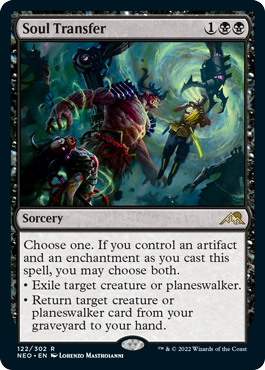
Soul Transfer is built for attrition, returning your most powerful creature to your hand while also dealing with a problematic opposing permanent. It takes some work to get full value out of it or Assassin’s Ink, but incidental artifacts from Treasure generators means we’re already halfway there.
On the off chance you have The Meathook Massacre already out on the table, both of these spells get seriously juiced. I especially love that one is an instant while the other is a sorcery, as that should create meaningful play patterns where you get punished against some threats more than others. Regardless, they’re mostly in the list because I wanted to try them out.
With the easy splash off Brightclimb Pathway, I’ve grown to love playing a few copies of Path of Peril in virtually all of my black decks where it makes sense. In particular, Path of Peril is a heater in Pioneer, but still offers you some insulation against aggressive decks in Standard. As the game goes long, this full-blown reset button can be cast a number of ways, including but not limited to Treasure tokens and even The Celestus.
This cycle of legendary lands are similar in theory to the old Kamigawa legendary lands, acting like upgraded basic lands. They enter the battlefield untapped, which is a boon for everyone who wants to play them. The first copy is free, and the second copy can be used via channel for its secondary effect. While this effect is on the weaker side, it comes at virtually no effort. I’m thinking of these lands in the same terms as the modal DFC lands in the Agadeem’s Awakening cycle. They’re just lands, unless you desperately need them to be anything else.
I think this could be a sick card against the control decks in the format. No one wants to kill an Eyetwitch, which means you could get shifty with ninjutsu and snag the best card out of their hand. I absolutely adore that two Biting-Palm Ninjas can keep bouncing each other, but the truth is that getting hit by this thing once could be lights out.
Lights Out
Junji, the Midnight Sky is an inherently powerful card that just needs a home. This period of time during preview season always hits me pretty hard in the feels, because this is when the Magic starts to happen. Each new preview sparks something inside you that makes you want to tap into that creative side of yourself. Each day you find yourself drifting off at work, thinking about the sweet brew you’re concocting around Oni-Cult Anvil or Spirit-Sister’s Call. These are the times where Magic is wild and wonderful and anything is possible, and we’re absolutely positive that Izzet Control won’t smash our dreams in a few weeks.
Wherever you are in the world, this feeling resounds throughout us, because this is when Magic means more than a game. It means investment in both time and money, but it also yields friendships and fun. I truly love Magic and creating content about the game, because I’m able to feel like a kid again every single time they make some big dumb Dragon Legend. Junji, the Midnight Sky could singlehandedly be the card that revives Siege Rhino and saves Pioneer. Invoke Despair could be the badass shield-breaker that heralds the end for our opponent.
We’re all just waiting for Friday night so we can see our friends and play Magic again. I hope we get there soon.

